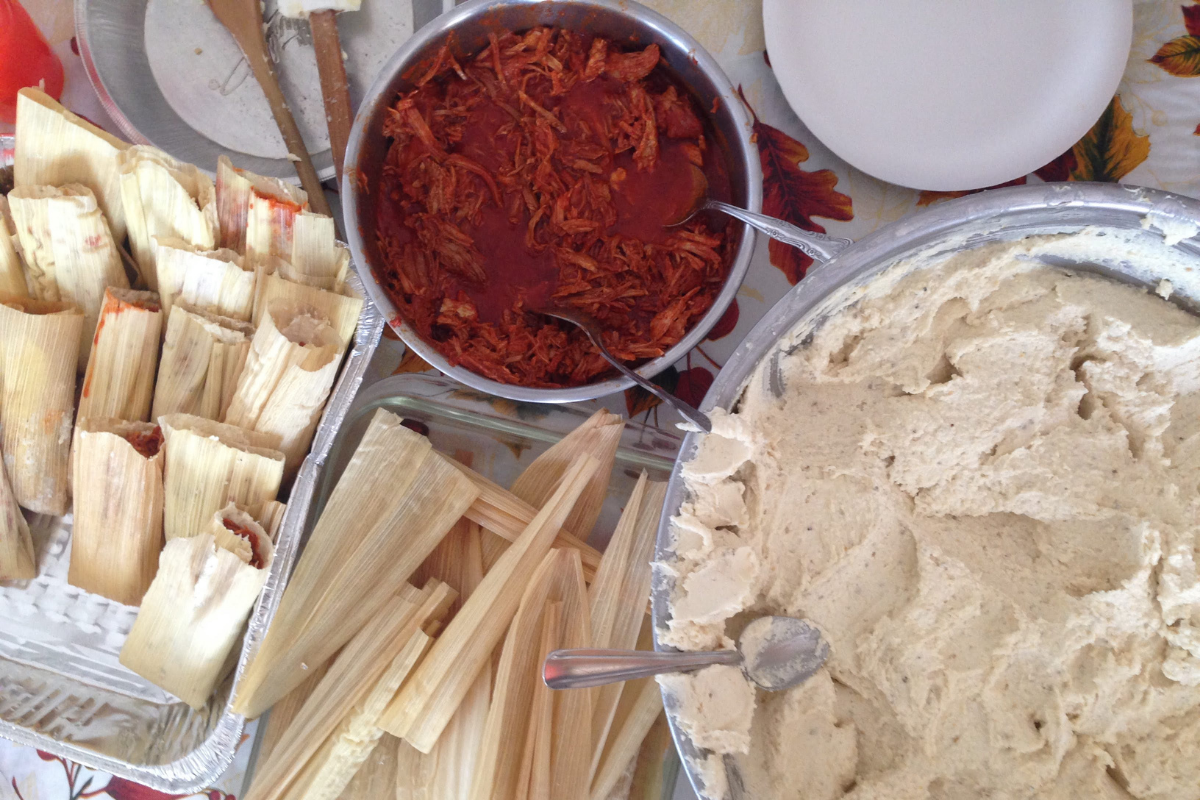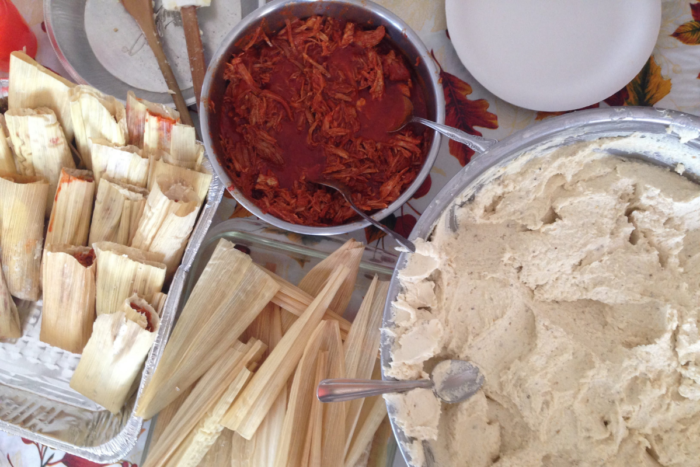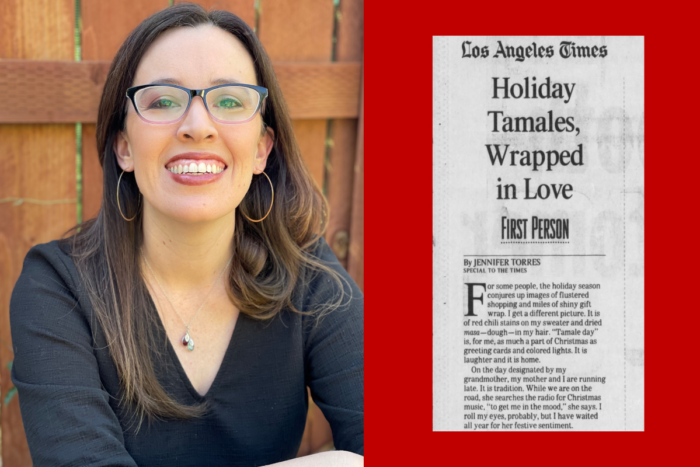
Making Tamales with Author, Jennifer Torres
Guest blog post written by Jennifer Torres, an award-winning author who writes stories about home, friendship, and unexpected courage inspired by her Mexican-American heritage.
One of my favorite parts of the school and library presentations I get to give comes when I click on a slide showing a big bowl of masa, another filled with red chili meat, and a tray of corn husks, all laid out on my grandmother’s oilcloth-covered table.
“Who knows what I am about to make with these ingredients?” I always ask.

I love the gasps of recognition—the hands that shoot straight up—from students who know. And, just as much, I love the wide-eyed curiosity of those who suddenly want to find out.
“Tamales!” someone always bursts.
“Tamales.” I nod.
The Way Stories Connect Us
I tell them a story about making tamales with my family during the holiday season. (Something I’m getting ready to do as I write this!) And we talk about the way stories connect us—to our cultures and our histories, and to one another. We talk about the way stories help us understand the lives of others, and how stories help us share who we are with the world.
Stories can also show us what’s possible. I was an eager reader growing up. The shelves in my school library were filled with books that were decades old, even then, and I devoured them. My first school-age attempts at writing were imitations of those stories, with characters and settings that bore no resemblance to anyone I knew, or anyplace I had ever visited. Because that’s what I thought stories had to be.
Finding My Story
Then, when I was in high school, my mother came home from a bilingual educators’ conference with a copy of Chicana Falsa by the late Michele Serros. The picture on the back cover reminded me a little of my Tía Tricia, and the stories inside were similarly familiar, written in a voice that sounded like mine, a mix of English and clunky Spanish. It was full of characters I felt like I knew—cousins and neighborhood friends—in Southern California where I had grown up. A gasp of recognition.
It changed everything I understood about the kinds of stories that belong in books and who is allowed to write them.
I don’t think it’s entirely a coincidence that, shortly after reading Chicana Falsa, I wrote the story that was my first to ever be published. It was a column for the Los Angeles Times about making tamales with my family during the holidays.

Sharing My Experiences
Now that I write books for young readers, my stories are not autobiographical. They are not “true” in the fact-or-fiction sense of the word. But I nevertheless try to fill them with details that are true to my experience: a morning cup of coffee and half a concha in The Fresh New Face of Griselda; a community pitching in to help a new college student buy textbooks in Flor and Miranda Steal the Show; sewing supplies stored in an old tin of Danish butter cookies in the upcoming chapter book series, Catalina Incognito; summers spent with a crew of cousins in The Do-Over, also upcoming.
Some (maybe most) readers will breeze over those small details. But I hope that others will stop and, with a gasp of recognition, begin to realize that their stories are also the kinds of stories that belong in books.
Access to Authentic Literature
It has been encouraging, over recent years, to see children’s literature more authentically and more fully reflect the diverse voices and experiences that make up our world. But the availability of these books doesn’t always mean that young readers are able to find them. This past fall, I received a letter from a fifth-grader in Washington who had just finished my middle-grade novel, Stef Soto, Taco Queen. “I don’t ever get to read about my Mexican culture or food,” he wrote. “That taco truck changed my reading life.”
Letters like that make me incredibly grateful for this opportunity I have to share my stories. They also make me grateful for the inspiring work of First Book, which does so much to make sure all readers have access to stories that help them imagine new possibilities.
Educator Activities for the Classroom
Mini Memoir
Here’s a writing activity that encourages students to share a story that reveals a bit of who they are and what they care about
Foods that Remind You of Home
In Stef Soto, Taco Queen, the main character’s favorite comfort food is a warm tortilla, dripping with melted butter. (That’s my favorite comfort food too!) Try making your own batch, then talk about the foods that remind you of home with this activity.
Join the Network
Educators can join First Book’s network — the largest and fastest-growing network of educators, schools, and programs serving children in need across the United States and Canada — to bring Jennifer Torres’ titles and many more to your classroom.
Shop Titles from Jennifer Torres
- Flor and Miranda Steal the Show
- The Fresh New Face of Griselda
- Stef Soto, la reina del taco (Spanish, English)
- Twins vs. Triplets #1: Back-to-School Blitz
